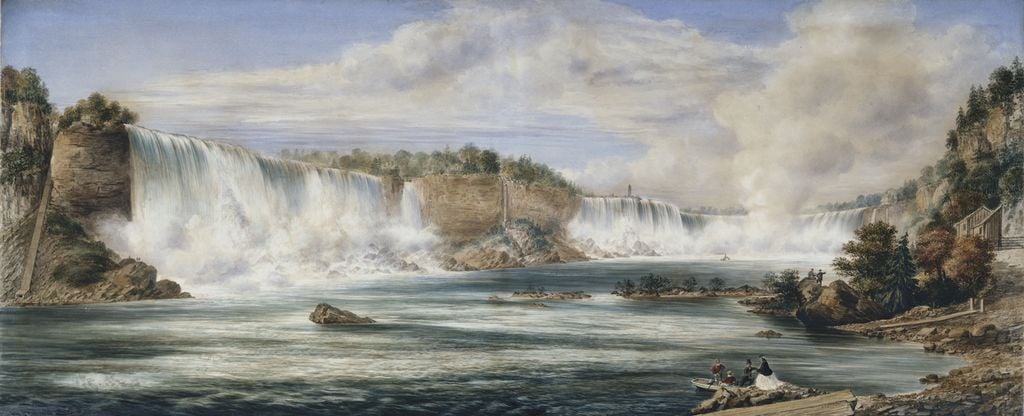
Canada
Explore The Royal Family's close relationship with the region, as well as the diverse artistic traditions represented in the Royal Collection
ABAYA'A SARAH MARTIN (D. 1963)
Chilkat blanket
c.1950-53Wool | 205.0 x 123.0 cm (whole object) | RCIN 33026
A First Nations woven wool Chilkat blanket with two suspension tapes at the top edge and a rounded edge at the bottom, with long white woollen fringing on the bottom and sides. With a central geometric design in yellow, green, black and white, within an orange, white and black border. Small sections of embroidery have been stitched over the woven design, including a white First Nations 'copper' in the centre panel and two small red squares on either side.
Chilkat blankets are thought to have emerged among the Tsimshian people by the early nineteenth century in what is now the west coast of British Columbia. This example incorporates many of the form's defining characteristics, including a framed two-dimensional design divided vertically into three parts, of which the outer two sections are symmetrical. The central section is designed to be the most prominent when the blanket is draped over the shoulders.
Blankets like these are worn to perform ceremonial dances and songs, or when making speeches. The two suspension tapes are tied at the neck to secure the blanket for wear.
The design of a Chilkat blanket is traditionally prepared by a man, who draws or paints the pattern on a wooden board. Weaving of the final piece is a female activity, done manually on a single-bar loom. This blanket was woven by Abaya'a Sarah Martin (née Smith). Her husband, Chief Mungo Martin, a leading Kwakwaka’wakw carver and painter, probably designed the central panel.







